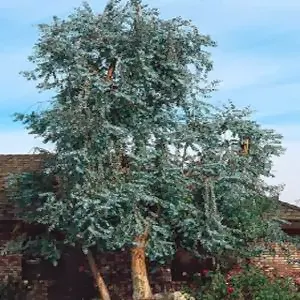By Liliana Usvat
Blog 270-365
''Acacia angustissima'' is a perennial, deciduous, shrub or tree in the Fabaceae family native to Central America and the United States. It is also found in South America, India and Pakistan.
Other common names for it include Carboncillo, Timbe, Timbre, Fern Acacia and Prairie wattle.
It grows 1m to 4m in height having whitish, 1.3 cm diameter spherical flowers from June through September. ''"Angustissima"'' in Latin means "narrowest," describing the look of the shrub's leaves.
Good for Reforestation
Altitude: 0-2600m
Annual Temperature Mean: 5-30 deg. C.
Annual Rainfall Mean: 895-2870mm
Soil: ''A. angustissima'' is well-suited for acidic, low-nutrient soils and it has very good resistance to drought.
The flowers are clustered into 1/2 inch (1.3 cm) wide, fuzzy balls of stamens and will open white and age to a pinkish color. The flowers are followed by flat, elongated, brown seedpods. The leaves are green and bipinnate with tiny leaflets. The stems are hairy, reddish, and spineless. The larger stems are ridged and grooved, unlike the similar, but taller and smooth-stemmed Lysiloma watsonii.
Propagation Material: Seeds , Softwood Cuttings
Description: Propagate by scarified seed or softwood cuttings.
Seed Collection: Collect in late summer to early fall when seeds are firm, filled out, and dark brown.
Butterfly Plant
The flowers attract butterflies and other insects like bees.
Chewing Gum
Used as a source of chewing gum or gum flavoring.
Medicinal Plant

Blog 270-365
''Acacia angustissima'' is a perennial, deciduous, shrub or tree in the Fabaceae family native to Central America and the United States. It is also found in South America, India and Pakistan.
Other common names for it include Carboncillo, Timbe, Timbre, Fern Acacia and Prairie wattle.
It grows 1m to 4m in height having whitish, 1.3 cm diameter spherical flowers from June through September. ''"Angustissima"'' in Latin means "narrowest," describing the look of the shrub's leaves.
Good for Reforestation
Annual Temperature Mean: 5-30 deg. C.
Annual Rainfall Mean: 895-2870mm
Soil: ''A. angustissima'' is well-suited for acidic, low-nutrient soils and it has very good resistance to drought.
The flowers are clustered into 1/2 inch (1.3 cm) wide, fuzzy balls of stamens and will open white and age to a pinkish color. The flowers are followed by flat, elongated, brown seedpods. The leaves are green and bipinnate with tiny leaflets. The stems are hairy, reddish, and spineless. The larger stems are ridged and grooved, unlike the similar, but taller and smooth-stemmed Lysiloma watsonii.
PROPAGATION
Description: Propagate by scarified seed or softwood cuttings.
Seed Collection: Collect in late summer to early fall when seeds are firm, filled out, and dark brown.
Butterfly Plant
The flowers attract butterflies and other insects like bees.
Chewing Gum
Used as a source of chewing gum or gum flavoring.
Medicinal Plant

- A bitter astringent, sedative herb that improves diegstion
- cerebral circulation
- Medicinal Uses. Internally for headaches associated with with debility
- nervous tension and
- for anxiety,
- neuralgia,
- sinusitis,
- excess upper respiratory tract mucus,
- gastritis,
- poor digestion,
- hypertension and
- menopausal problems.
- Externally for wounds (especially if infected),
- bruises,
- ulcers, sore throat, and
- gum inflammation.
- for tension headaches
"action:
- astringent,
- carminative,
- diuretic,
- expectorant,
- nervine,
- tonic,
- vulnerary"
- "body: bladder,
- kidney,
- spleen,
- stomach"
- asthma,
- bladder ailments,
- bronchitis,
- cancer,
- cough,
- cuts,
- excessive sweating,
- external ulcers,
- heartburn,
- kidney ailments,
- neurasthenia,
- sore,
- spitting blood,
- sprains,
- varicose veins,
- wen,
- worms"
regular use is recommended for
- varicose veins.
- A strong decoction is used against worms.
- The juice of the plant can be used to heal cuts, external "



